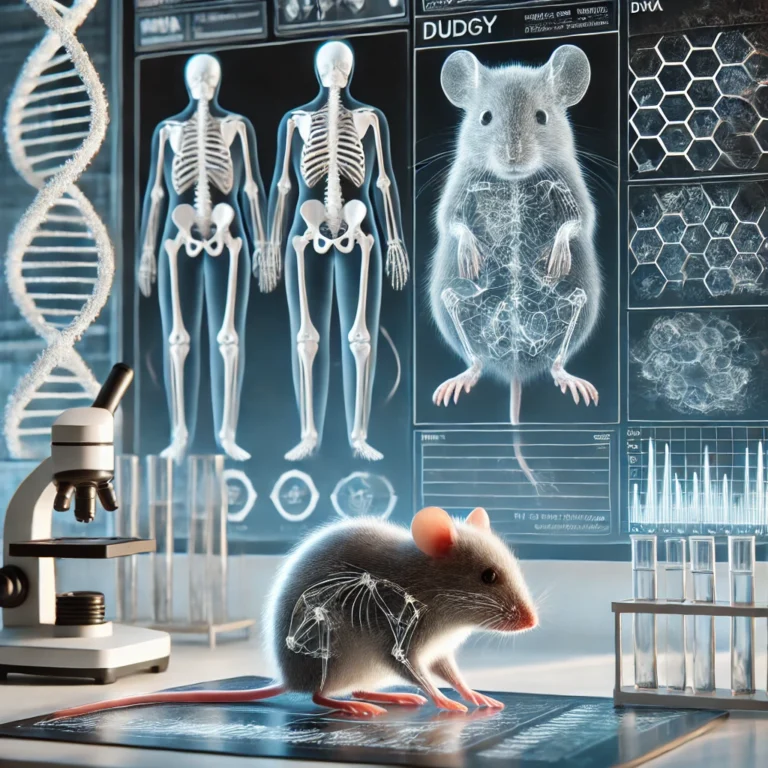
When you think of transcription, you might envision RNA polymerase II (RNAPII) as the primary player in copying DNA into messenger RNA (mRNA). But there’s much more to this process than just copying genetic information. In fact, the way RNA is processed during transcription is just as important as its creation. A critical component in this process is the C-terminal domain (CTD) of RNAPII, a specialized region that plays a crucial role in coupling transcription with the co-transcriptional processing of RNA.
The RNAPII CTD has been a subject of intense study because of its unique ability to link transcription with essential RNA processing steps such as capping, splicing, and polyadenylation. In this blog, we’ll explore how the RNAPII CTD functions as a scaffold for RNA processing and how its post-translational modifications regulate these processes to ensure proper gene expression.
What Is the RNAPII CTD?
The C-terminal domain (CTD) of RNA polymerase II is a long, repetitive sequence of amino acids that extends from the enzyme’s core. While the main role of RNAPII is to transcribe DNA into RNA, the CTD does much more than just facilitate transcription. It acts as a platform, or scaffold, for recruiting various RNA processing factors that modify the RNA transcript during its synthesis.
These modifications are critical for the maturation of the RNA molecule, which must be capped, spliced, and polyadenylated before it can be translated into a protein. The RNAPII CTD plays an essential role in coordinating these events to ensure the proper processing of pre-mRNAs.
How Does the CTD Interact with RNA Processing?
Early studies revealed that the absence of a functional CTD significantly reduced RNA processing, including capping, splicing, and polyadenylation (Cho et al., 1997; McCracken et al., 1997). This finding indicated that the CTD directly interacts with the RNA processing machinery, acting as a crucial bridge between transcription and RNA maturation.
One of the key features of the CTD is its ability to undergo post-translational modifications, particularly the phosphorylation of specific serine residues. These modifications regulate when and where various RNA processing factors bind to the CTD, controlling the timing of RNA modifications during transcription.
The Role of Phosphorylation in RNA Processing
Phosphorylation at specific positions on the CTD, particularly at serines 5, 2, and 7, plays a critical role in regulating RNA processing.
- Serine 5 Phosphorylation: During the initiation of transcription, Ser 5 is phosphorylated, which serves as a signal for the recruitment of capping factors to the CTD (Cho et al., 2001; Trigon et al., 1998). This is the first step in the processing of the nascent RNA, marking the RNA transcript with a 5′ cap, a necessary modification for stability and translation.
- Serine 2 Phosphorylation: After transcription initiation, Ser 5 is dephosphorylated, and Ser 2 is phosphorylated. Phosphorylation at Ser 2 functions as a platform for the binding of splicing and polyadenylation factors, facilitating the processing of the RNA transcript into a mature mRNA (Buratowski, 2009; Phatnani and Greenleaf, 2006).
- Serine 7 Phosphorylation: More recently, it has been shown that phosphorylation at Ser 7 is crucial for the recruitment of the integrator complex, which plays a role in 3′-end processing of small nuclear RNAs (snRNAs). This modification highlights the complex regulatory roles of the CTD and its involvement in different RNA processing events (Egloff et al., 2012).
Transcription Initiation: The First Step in Transcription
Transcription begins when the general transcription factors (GTFs) and RNAPII assemble at the promoter region of the gene. This process is enhanced by distal regulatory regions known as enhancers, which can be located far from the genes they regulate (Ong and Corces, 2011). In the early stages of transcription initiation, a series of GTFs—TFIIA, TFIIB, TFIID, TFIIE, TFIIF, and TFIIH—bind to the promoter in a sequential manner. This leads to the formation of the closed initiation complex (Buratowski et al., 1989; Conaway and Conaway, 1993).
Once the template DNA is unwound by TFIIH, the open initiation complex is formed, and RNAPII begins to synthesize short abortive transcripts (Dvir et al., 1997). These short RNA pieces are produced until RNAPII transitions to a productive elongation phase, where it synthesizes a full-length transcript. However, the transition from initiation to elongation isn’t as simple as it sounds.
Overcoming Barriers in Transcription Elongation
While initiation is a critical step in transcription, it was once thought to be the rate-limiting step in gene activation (Ptashne and Gann, 1997). However, modern research suggests that elongation poses its own set of challenges. RNAPII must overcome several barriers during transcription elongation, such as pausing and the recruitment of elongation factors, before it can produce a full-length transcript. The role of the CTD in elongation is crucial, as it coordinates the recruitment of factors that help RNAPII overcome these barriers and maintain a steady transcriptional rate.
Conclusion: The Central Role of the CTD in Transcription and RNA Processing
The RNAPII CTD is much more than just a structural component of the enzyme. It acts as a dynamic scaffold, coordinating the complex interactions between transcription and RNA processing. By undergoing specific post-translational modifications, the CTD regulates the recruitment of factors necessary for capping, splicing, and polyadenylation, ensuring that the RNA transcript is processed efficiently and accurately.
As our understanding of the CTD deepens, it becomes clear that this region of RNAPII plays a far-reaching role in gene regulation, from the initiation of transcription to the production of a mature mRNA. Further research into the CTD and its interactions with RNA processing factors may uncover new insights into how gene expression is regulated at multiple levels.


